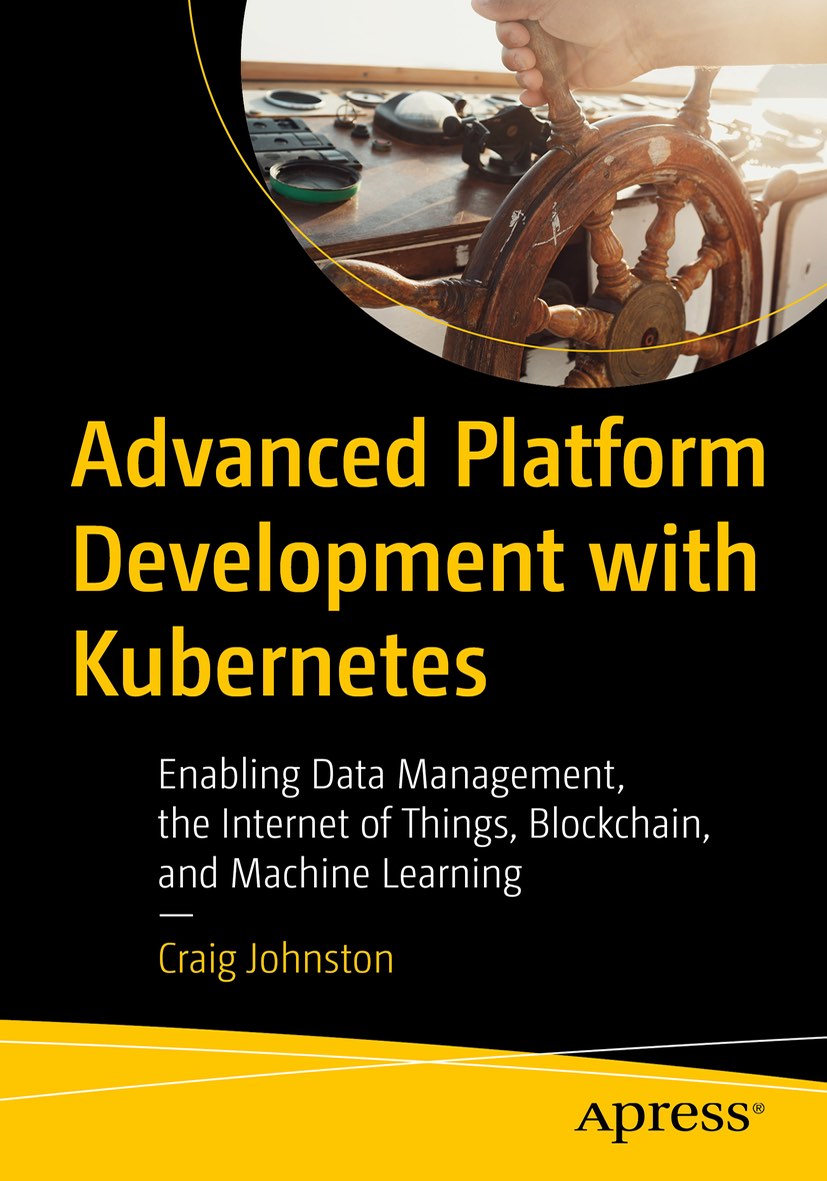I use Minikube to run a local Kubernetes single node cluster (cluster?). However, I also work with a custom production cluster for work. This cluster consists of development and production nodes. I often need to switch between working on my local Minikube and the online Kubernetes cluster.
TIP: Visit the kubectl Cheat Sheet often.

Advanced Platform Development with Kubernetes
What You'll Learn
- Build data pipelines with MQTT, NiFi, Logstash, MinIO, Hive, Presto, Kafka and Elasticsearch
- Leverage Serverless ETL with OpenFaaS
- Explore Blockchain networking with Ethereum
- Support a multi-tenant Data Science platform with JupyterHub, MLflow and Seldon Core
- Build a Multi-cloud, Hybrid cluster, securely bridging on-premise and cloud-based Kubernetes nodes
The default configuration kubectl is stored in ~/.kube/config and
if you have Minikube installed, it added the context minikube to your config.
With kubectl you can specify a config to use with the command flag --kubeconfig.
Below I am just pointing to default config. However, you can replace that with a different config to test.
kubectl --kubeconfig=/Users/enochroot/.kube/config config view
In addition to specifying a configuration file to use, kubectl configs also contain contexts. Each configuration file can have multiple contexts.
Current Context
A context is a combination of cluster, namespace and user.
View the current context:
kubectl config view
You should now see the output the default configuration file.
You can see we have only one context by default on a workstation that just installed Minikube. You can also see the key current-context: is set to minikube.
Check the current config context:
kubectl config current-context
Output:
minikube
Add a Cluster
Get the public certificate from your cluster or use --insecure-skip-tls-verify:
kubectl config set-cluster example --server https://example.com:6443 --certificate-authority=example.ca
Output
Cluster "example" set.
Add a User
Users in the configuration can use a path to a certificate --client-certificate or use the certificate data directly --client-certificate-data
kubectl config set-credentials example \
--client-certificate=/some/path/example.crt \
--client-key=/some/path/example.key
Add a Context
Add a context to tie a user and cluster together.
kubectl config set-context deasil --cluster=example \
--namespace=default --user=example-admin
Change Current Context
At this point you can change your current context from minikube to example:
kubectl config use-context example
Output:
example
Of course, kubectl config use-context minikube will put you back
to managing your local Minikube.
Port Forwarding / Local Development
Check out kubefwd for a simple command line utility that bulk forwards services of one or more namespaces to your local workstation.

Advanced Platform Development with Kubernetes
What You'll Learn
- Build data pipelines with MQTT, NiFi, Logstash, MinIO, Hive, Presto, Kafka and Elasticsearch
- Leverage Serverless ETL with OpenFaaS
- Explore Blockchain networking with Ethereum
- Support a multi-tenant Data Science platform with JupyterHub, MLflow and Seldon Core
- Build a Multi-cloud, Hybrid cluster, securely bridging on-premise and cloud-based Kubernetes nodes
Resources
This blog post, titled: "Kubernetes Remote Control: Using kubectl to Control a Remote Kubernetes Cluster" by Craig Johnston, is licensed under a Creative Commons Attribution 4.0 International License.

SUPPORT
Order my new Kubernetes book: Advanced Platform Development with Kubernetes: Enabling Data Management, the Internet of Things, Blockchain, and Machine Learning